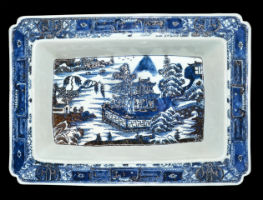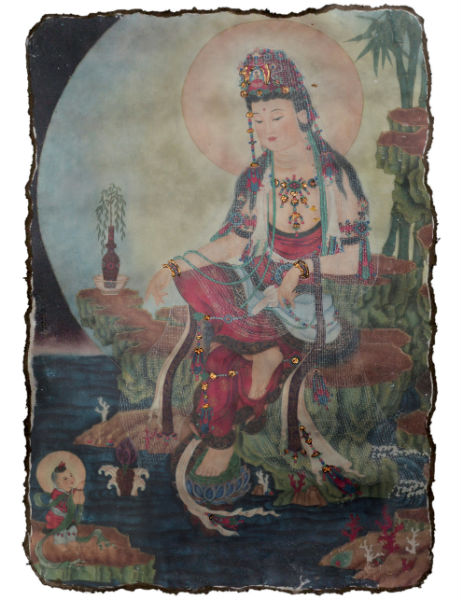
NEW YORK – The making of the Chinese aesthetic that began in the Neolithic age and continues to evolve today has made the arts of China among the most sought after in the world. Collectors of revered objects–from Song Dynasty frescos to Yuan ceramics, classic and modern art to signature seals and Zisha teapots–will find strong collections at Gianguan Auctions sale on Saturday, Dec. 9. Absentee and Internet live bidding is available through LiveAuctioneers.
The day’s most storied offerings are two Song Dynasty polychrome wall frescoes. The lead Buddhist work of art is a panel depicting the Water-Moon Guanyin, also known as Avalokiteshvara of the Southern Seas (above). She is portrayed in the traditional posture, seated on rockery, wearing robes and an elaborate headdress with gilt highlights. The robes are outlined in thread relief making for an exceptionally detailed portrayal further enhanced by the quality of the remaining mineral pigment that appears to glisten. It is 4 feet tall and suitable for a religious institution or a private collector.
Another prized stucco fresco, also of Song origin, is Court Ladies Tea Banquet, which replicates Zhang Xuan’s famous painting. The 4 feet long panel has light damage, typical of its age. It is Lot 67. Both works are valued at upward of $30,000.
Gianguan has gathered an excellent collection of moderately valued modern and contemporary paintings for this sale. Twentieth-century master Xu Beihong (1895-1953), one of the first to reflect a renewed China in his works of animals, is represented by Two Racing Stallions. The 1942 work, depicts two black horses galloping through a field of amber wheat. Created the year the British were defeated in Singapore, this may well be a metaphor for the competitiveness of nations. Signed, with one artist seal, this is Lot 70 valued at upward of $40,000.
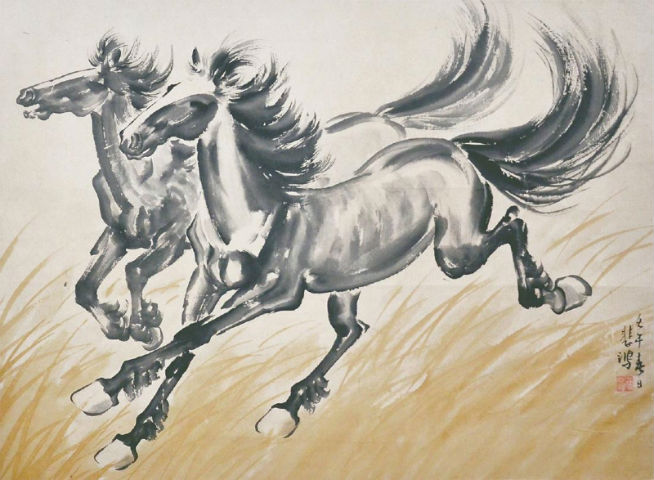
Yu Feian’s Spring Budding is the acquisition that offers hope with a realistic portrayal of daffodils, peony and a cawing magpie. Influenced by the realism of Western artists, Yu Feian added a purely historical twist with “slender gold” calligraphy in the manner of Song Emperor Huizong. This is Lot 122, starting at $15,000.
It makes a handsome counterpart to the day’s leading ceramic, a masterfully painted 13th-century cobalt blue and white bulb vase (below). The highly detailed interior panorama of a pavilion in landscape makes it clear that the manipulation of cobalt blue was already a sophisticated technique when Kublai Khan established his capital on the site of modern Beijing. It is estimated to fetch more than $60,000.
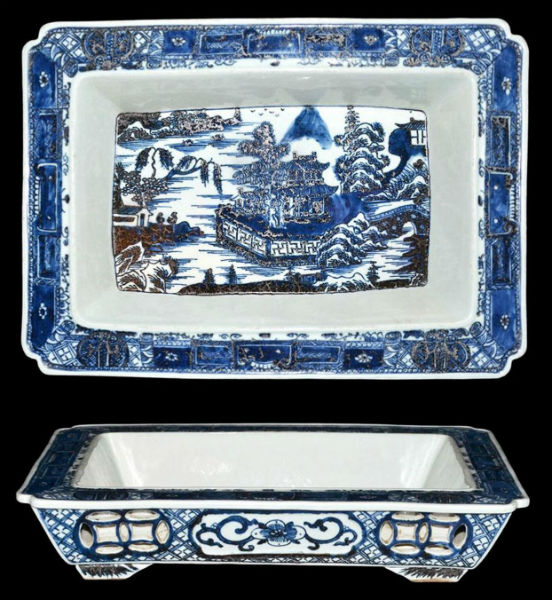
In 1937, Qi Baishi penned a simple picture of a man fanning the flame of a fire over which he is brewing tea. It is Lot 112, inscribed and signed Qi Huang, with two artists seals, and estimated at more than $80,000. The draftsmanship is superb, of course, but it is his homage to a daily ritual that makes it outstanding. If auctions were staged in vignettes, this painting would lead the collection of Zisha teapots by star potters.
The oldest is Ming master Hui Meng Chen’s compact teapot with applied mountainous landscape and inscription (below). Perhaps the most conceptual is contemporary Master of Chinese Art Wang Yinxian’s angled pot with slip molded squirrels that appears to float on its recessed tree-trunk base (Lot 272).
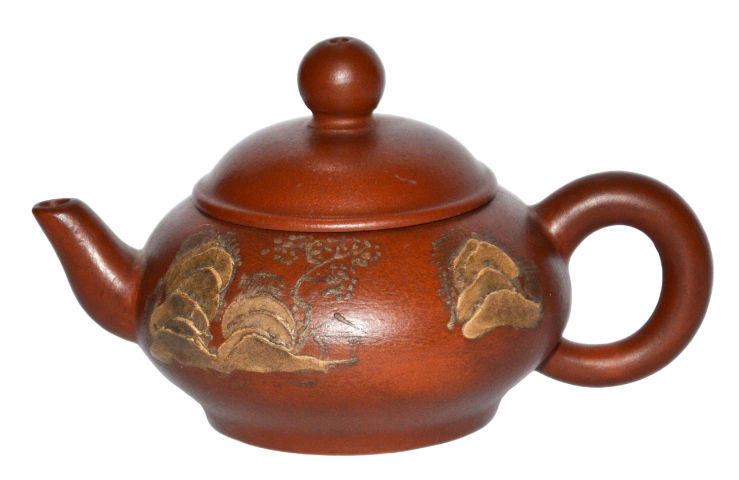
Among the Gu Jingzhou teapots is an unusual black basket weave pot with molded bamboo handle and spout (Lot 285). Most of the teapots are signed and bear artists’ seals. The teapots have catalog estimates of $500-$2,000. It should be noted that the popularity of Zisha teapots has soared recently.
Chinese seals that once again dominate official documents and artwork comprise another popular category in which Gianguan Auctions is the leader.
Rare examples include Lot 4, a large Tianhuang stone seal with a fantastical dragon-tortoise knop, 5 inches tall, weighing 4 pounds.
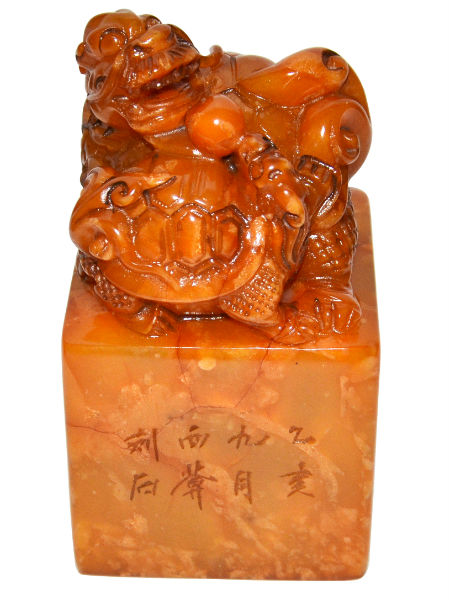
No Chinese art auction would be complete without carved jades. The category’s marquee item is an 1,800-year-old white, translucent jade stem cup of the Qin Dynasty. Exceedingly rare, it bears a catalog value of more than $20,000.
For details and condition reports on all the fine consignments in Gianguan Auctions’ Dec. 9 sale, contacting the gallery director at info@gianguanauctions.com or call (001) 212-867-7288.
[av_button label=’View the fully illustrated catalog and bid on LiveAuctioneers.’ link=’manually,http://bit.ly/2iHOSIf’ link_target=’_blank’ size=’medium’ position=’center’ icon_select=’no’ icon=’ue800′ font=’entypo-fontello’ color=’theme-color’ custom_bg=’#444444′ custom_font=’#ffffff’ admin_preview_bg=” av_uid=’av-rv2sa2′]


